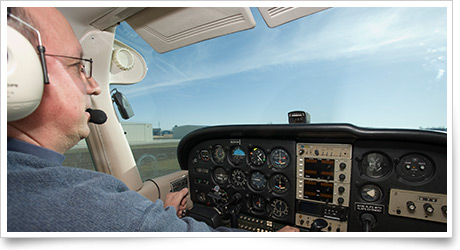| The following stories from the Jan. 27, 2012, edition of AOPA ePilot were provided to AOPA members who expressed an interest in the particular subject areas. Any AOPA member can receive information tailored to their areas of interest by updating their preferences online. |
training tipsKeeping track of traffic After a few flights with traffic advisories, the terminology becomes familiar and you learn the distinctions between the various phrases ATC uses. For example, if you haven't spotted an aircraft reported as nearby or on a converging course, it's a relief to hear the controller follow up and advise you that the traffic is no factor. However, if ATC reports that the traffic is no longer observed, the other aircraft may still be nearby—perhaps descending—so it's important for you to continue scanning for it. Two-way communication is the key to making traffic advisories work, so what should you do if you lose track of an aircraft that you had previously reported in sight? In that case, be sure to notify the radar controller if you lose visual contact. This is important for two reasons. First, it will alert the controller that he or she should resume advising you of the aircraft's position relative to yours. Second, if you had been instructed to follow the aircraft to the airport, ATC will have to come up with a new plan for sequencing your arrival. If the other traffic is a large aircraft, you will have to be sure to avoid encountering its wake turbulence. Too often, pilots drop the ball by failing to inform ATC that they have lost sight of previously reported traffic, with safety suffering. A near-midair-collision that occurred while a Beech Bonanza was descending to a Pennsylvania airport followed the pilot's losing sight of traffic, according to the report the pilot submitted to the Aviation Safety Reporting System. The pilot was unsure whether the conflicting traffic, a Cessna, was the same aircraft or another airplane. Spotting it may also have been hindered by its being concealed in the Bonanza's blind spot. With all the demands on a pilot's attention, losing visual contact with another aircraft is always possible. Be safe, and get that second pair of eyes helping you out again! training productsPortable cart for BrightLine BagBrightLine Bags has introduced a portable folding cart for use with its premier offering, the Brightline Bag. The cart is meant to be used when the bag is filled up and heavy. It weighs three pounds and sells for $25. To order, see the website or call 415/721-7825.
Note: Products listed have not been evaluated by ePilot editors unless otherwise noted. AOPA assumes no responsibility for products or services listed or for claims or actions by manufacturers or vendors. final examQuestion: I recently had LASIK surgery, and I am wondering if I need to report it to the FAA. If I do, when should I do that?
Answer: Yes, the FAA requests that a pilot report LASIK or other laser eye surgery to the Aerospace Medical Certification Division in Oklahoma City, Okla., upon completing the surgery and recovery period. The surgery also should be reported on the medical application at the time of the pilot's next visit with an aviation medical examiner. The FAA expects that a pilot will ground himself or herself until a treating physician determines that the post-operative condition has stabilized, there have been no significant adverse effects or complications, and the individual meets the appropriate vision standards for the certificate held. Once a favorable determination has been made, a pilot may resume flying immediately. For more information, read AOPA's subject report on photorefractive procedures.
Got a question for our technical services staff? E-mail [email protected] or call the Pilot Information Center, 800/872-2672. Don’t forget the online archive of “Final Exam” questions and answers, searchable by keyword or topic. |
 Getting
Getting 

